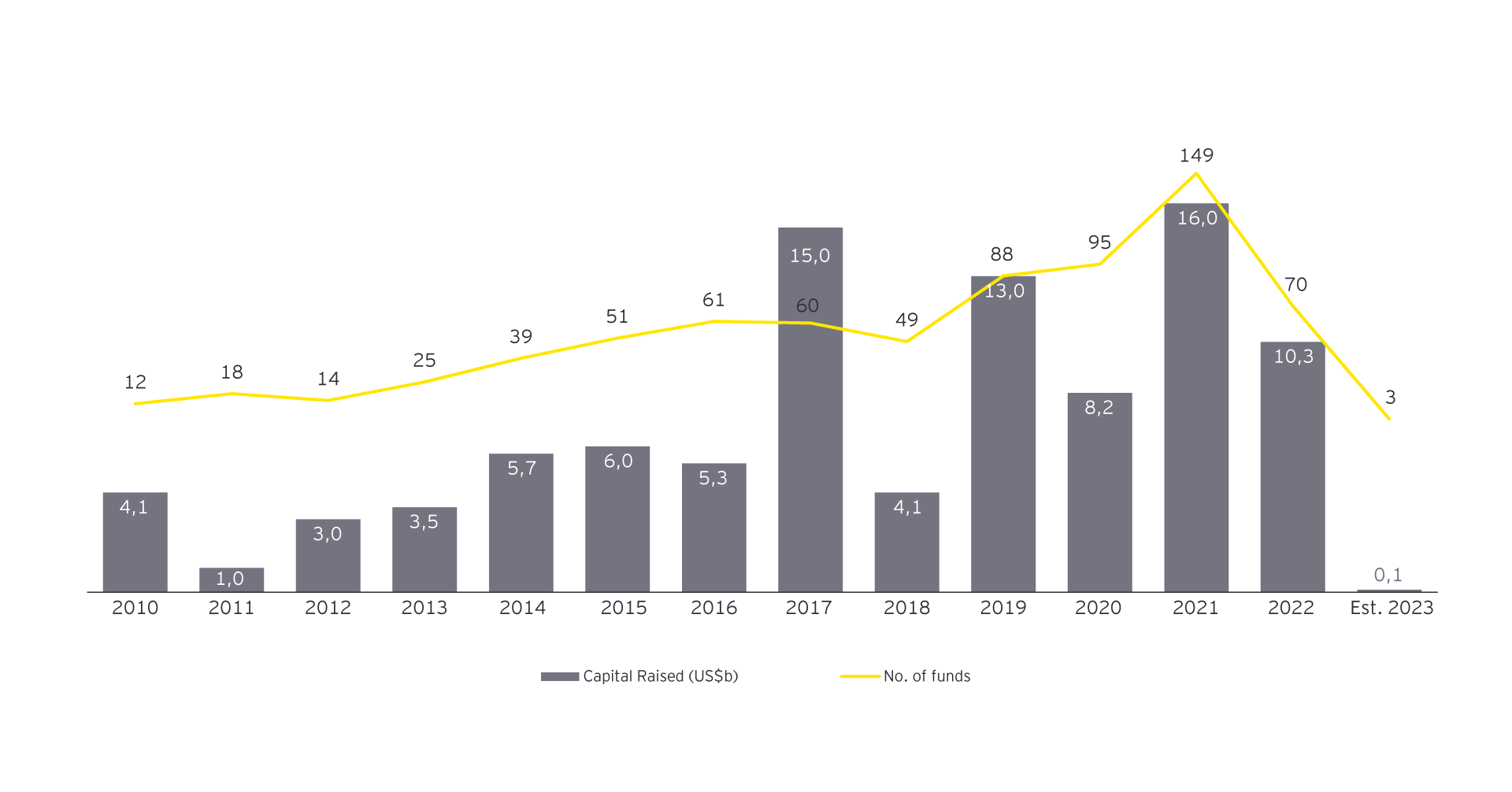During 2022, the number of private equity funds decreased significantly from 1,129 to 5971. This was due to LPs becoming more careful about investing money and concentrating on experienced managers. Consequently, newly establishloed managers faced significant challenges, with the fundraising for first-time private equity funds reaching its lowest point in the past nine years. To fill the equity gap, GPs turned to the co-investment market. This strategy also enabled PE managers to dedicate additional time to raise their subsequent commingled funds. Additionally, some GPs used co-investments to diversify their portfolios and extend their investment period, allowing them to be out of the market for longer.
Moreover, debt became scarcer in 2022, further increasing the demand for co-investments– propelled not only by the inclination of LPs to seek decreased fees and their demand for increased equity financing, but also by the cost of debt to fund buyouts, which has occurred due to a more stringent credit market and higher interest rates.
Family offices: at the forefront of recent co-investment appetite among LPs
The inclination towards co-investment is robust, with almost two-thirds2 of institutional investors planning to directly invest alongside their GPs over the next 12 months.
Co-investment is a strategy utilized by family offices, which may involve multiple approaches such as "club" deals that unite multiple families for investments, investing alongside a PE fund but without investing in the fund itself, or collaborating with another family to invest in a business. Globally, 42.5%3 of family offices are already engaging in co-investment activities. While PE and other fund structures may still be suitable for families who want to invest in less-familiar industries, the family office industry is characterized by a more personal and relationship-oriented approach than institutional investing. As a result, families are more likely to co-invest in projects and assist each other in finding investment opportunities4.
Benefits of co-investment
For GPs, co-investing presents a chance to invest more money in attractive companies since they often face restrictions on their investments in a single firm due to concentration limitations.
On the LP side, co-investment provides a more targeted approach, allowing them direct access to excellent private firms instead of investing in numerous companies through fund-of-funds (which also has the drawback that it can take up to seven years to achieve full investment). Typically, co-investment involves investing in 25 to 30 companies spanning various GPs, countries and industries, while maintaining a suitable level of diversification.
Furthermore, co-investments are typically offered by GPs without management or performance fees, increasing the net return, particularly in an asset class recognized for its high fees.
The pitfalls and challenges of co-investment
Co-investing is popular among investors who seek greater control of their fees and involvement in their investments. Rather than passively investing in a fund, some expect a seat at the table and direct investment in the BidCo or target. However, the market for co-investors has become saturated, and the quality of co-investors varies widely.
However, the majority of co-investors are "passive" rather than leading or underwriting the deal. This has caught the attention of the SEC, which is reviewing and considering new regulations to address such differences.
Another potential issue with co-investment is the potential for conflict of interest. GPs may over-allocate co-investment opportunities to potential future fund investors, leading to "sweet deals" and an unfair advantage. Furthermore, when co-investors dilute the stakes of major fund investors, potential conflict can arise within the fund structure.
Overall, co-investment offers benefits for investors seeking greater control and involvement in their investments. However, it is important to consider the potential conflicts of interest and other challenges that come with this approach.
[1] Pitchbook – GPs tap co-investments as debt dries up and fundraising lags | PitchBook
[2] Private Equity International – Roundtable: How co-investors are adjusting to an unsettled market
[3] Fintrx – The Rise of Family Offices Co-Investing: Growth in Direct Investment Partnerships
[4] Affinity – The Rise of Family Office Direct and Co-Investing



